
The Musée de Cluny, officially Musée de Cluny-Musée National du Moyen Âge, is a museum of medieval art in Paris. It is located in the 5th arrondissement of Paris, bordered by square Samuel-Paty to the south, boulevard Saint-Michel to the west, boulevard Saint-Germain to the north, and rue Saint-Jacques to the east.
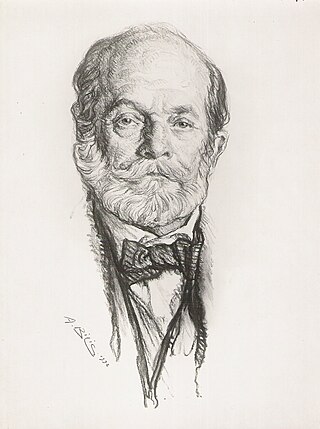
Auguste Perret was a French architect and a pioneer of the architectural use of reinforced concrete. His major works include the Théâtre des Champs-Élysées, the first Art Deco building in Paris; the Church of Notre-Dame du Raincy (1922–23); the Mobilier National in Paris (1937); and the French Economic, Social and Environmental Council building in Paris (1937–39). After World War II he designed a group of buildings in the centre of the port city of Le Havre, including St. Joseph's Church, Le Havre, to replace buildings destroyed by bombing during World War II. His reconstruction of the city is now a World Heritage Site for its exceptional urban planning and architecture.

Hector Guimard was a French architect and designer, and a prominent figure of the Art Nouveau style. He achieved early fame with his design for the Castel Beranger, the first Art Nouveau apartment building in Paris, which was selected in an 1899 competition as one of the best new building facades in the city. He is best known for the glass and iron edicules or canopies, with ornamental Art Nouveau curves, which he designed to cover the entrances of the first stations of the Paris Metro.

The Petit Palais is an art museum in the 8th arrondissement of Paris, France.

Christian de Portzamparc is a French architect and urbanist.
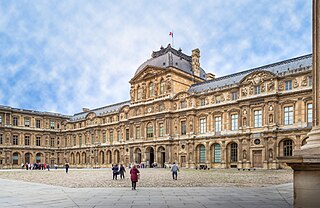
The Louvre Palace, often referred to simply as the Louvre, is an iconic French palace located on the Right Bank of the Seine in Paris, occupying a vast expanse of land between the Tuileries Gardens and the church of Saint-Germain l'Auxerrois. Originally a defensive castle, it has served numerous government-related functions in the past, including intermittently as a royal residence between the 14th and 18th centuries. It is now mostly used by the Louvre Museum, which first opened there in 1793.
Jean Aubert was a French architect, the most successful of the Régence and designer of two of the most important buildings of the period: the stables of the Château de Chantilly and the Hôtel Biron in Paris. He also created innovative interior designs, the most notable, the separation of private and public spaces for the Palais Bourbon in Paris.

Germain Boffrand was a French architect. A pupil of Jules Hardouin-Mansart, Germain Boffrand was one of the main creators of the precursor to Rococo called the style Régence, and in his interiors, of the Rococo itself. In his exteriors he held to a monumental Late Baroque classicism with some innovations in spatial planning that were exceptional in France His major commissions, culminating in his interiors at the Hôtel de Soubise, were memorialised in his treatise Livre d'architecture, published in 1745, which served to disseminate the French Louis XV style throughout Europe.
The Prix d'architecture de l'Équerre d'argent is a French architecture award. This prize was launched in 1960 by "Architecture Française" magazine and its director Michel Bourdeau.
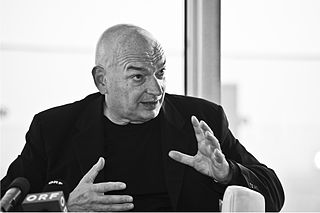
Jean Nouvel is a French architect. Nouvel studied at the École des Beaux-Arts in Paris and was a founding member of Mars 1976 and Syndicat de l'Architecture, France’s first labor union for architects. He has obtained a number of prestigious distinctions over the course of his career, including the Aga Khan Award for Architecture, the Wolf Prize in Arts in 2005 and the Pritzker Prize in 2008. A number of museums and architectural centres have presented retrospectives of his work.

The Grand Hotel de L'Independance, formerly the Hotel de France, is a hotel in downtown Conakry, Guinea. The hotel was first opened in 1954 as the Hotel de France, with a modernistic design for the time. It was renamed the Grand Hotel de L'Independance when Guinea gained independence in 1958. The hotel was extensively renovated in 1996, operating under management by Novotel until 2013.
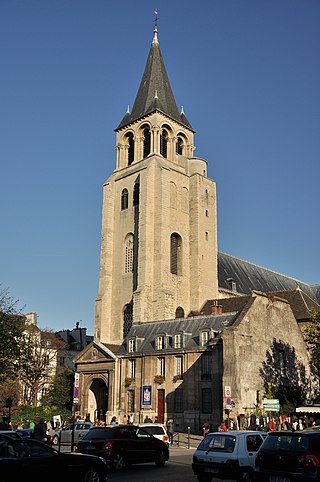
The city of Paris has notable examples of architecture of every period, from the Middle Ages to the 21st century. It was the birthplace of the Gothic style, and has important monuments of the French Renaissance, Classical revival, the Flamboyant style of the reign of Napoleon III, the Belle Époque, and the Art Nouveau style. The great Exposition Universelle (1889) and 1900 added Paris landmarks, including the Eiffel Tower and Grand Palais. In the 20th century, the Art Deco style of architecture first appeared in Paris, and Paris architects also influenced the postmodern architecture of the second half of the century.
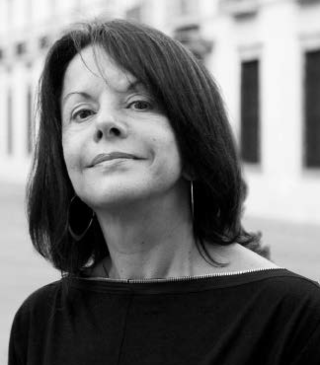
Elizabeth de Portzamparc is a French-Brazilian architect.
Ducks Scéno is a French company based in Villeurbanne specializing in scenography and museography.

Neoclassicism is a movement in architecture, design and the arts which was dominant in France between about 1760 to 1830. It emerged as a reaction to the frivolity and excessive ornament of the baroque and rococo styles. In architecture it featured sobriety, straight lines, and forms, such as the pediment and colonnade, based on Ancient Greek and Roman models. In painting it featured heroism and sacrifice in the time of the ancient Romans and Greeks. It began late in the reign of Louis XV, became dominant under Louis XVI, and continued through the French Revolution, the French Directory, and the reign of Napoleon Bonaparte, and the Bourbon Restoration until 1830, when it was gradually replaced as the dominant style by romanticism and eclecticism.
Campus PSG, officially known as the Paris Saint-Germain Training Center, is the training ground and sports complex of Paris Saint-Germain Football Club. Located in Poissy, it replaced the Camp des Loges, the club's historical training facility in nearby Saint-Germain-en-Laye.

The Art Deco movement of architecture and design appeared in Paris in about 1910–12, and continued until the beginning of World War II in 1939. It took its name from the International Exposition of Modern Decorative and Industrial Arts held in Paris in 1925. It was characterized by bold geometric forms, bright colors, and highly stylized decoration, and it symbolized modernity and luxury. Art Deco architecture, sculpture, and decoration reached its peak at 1939 Exposition Internationale des Arts et Techniques dans la Vie Moderne, and in movie theaters, department stores, other public buildings. It also featured in the work of Paris jewelers, graphic artists, furniture craftsmen, and jewelers, and glass and metal design. Many Art Deco landmarks, including the Théâtre des Champs-Élysées and the Palais de Chaillot, can be seen today in Paris.
The Grand Louvre refers to the decade-long project initiated by French President François Mitterrand in 1981 of expanding and remodeling the Louvre – both the building and the museum – by moving the French Finance Ministry, which had been located in the Louvre's northern wing since 1871, to a different location. The centerpiece of the Grand Louvre is the Louvre Pyramid designed by Chinese-American architect I. M. Pei, which was also the project's most controversial component. The Grand Louvre was substantially completed in the late 1990s, even though its last elements were only finalized in the 2010s.

The Grand Palais Éphémère is a temporary exhibition hall in the Champ de Mars by architect Jean-Michel Wilmotte. The 10,000 m2 hall opened in 2021 and is meant to be dismantled in 2024. Its purpose is to host exhibitions while the Grand Palais is being renovated for the 2024 Summer Olympics. The Grand Palais Éphémère will host the Judo and Wrestling events at the 2024 Summer Olympics. GL events, the events organisation major, is the concessionaire for the ephemeral Grand Palais. It maintains and manages the resale of the building.
Jean-Pierre Buffi is a Franco-Italian architect.














